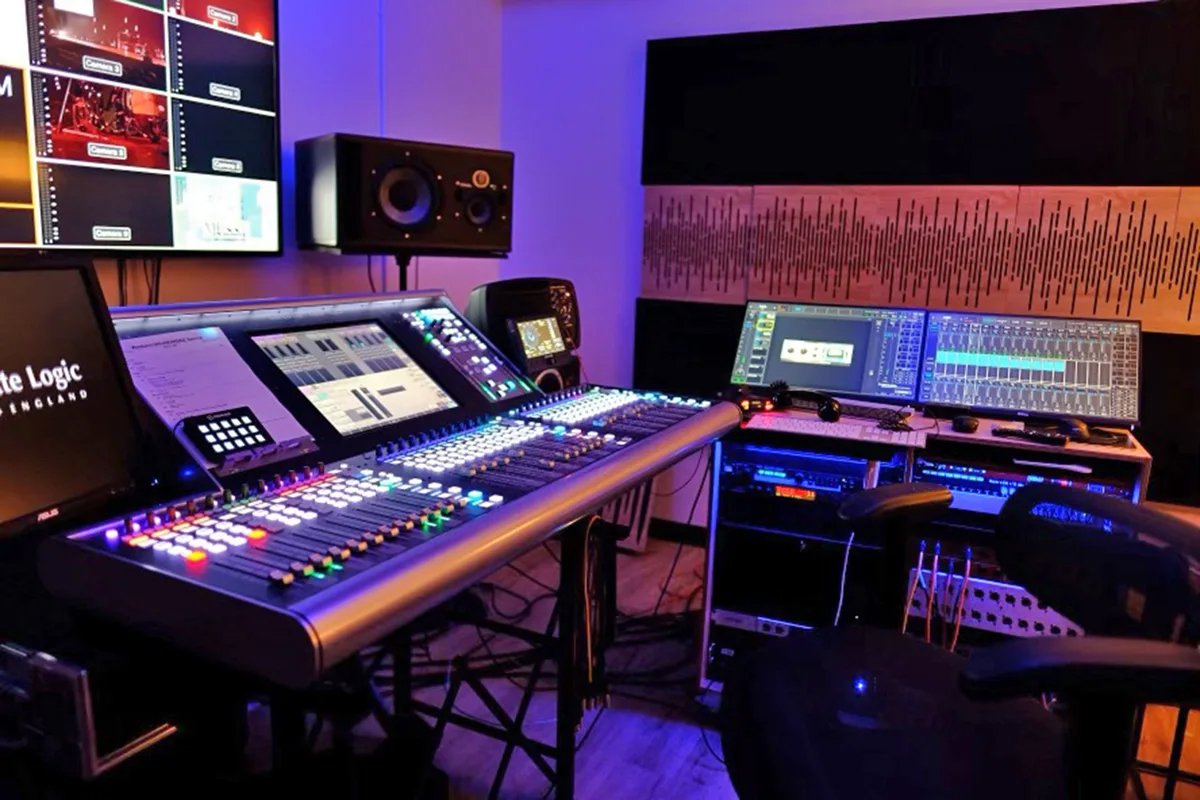The future seems bright. Churches have been brought into the 21st century (albeit some kicking and screaming.) I’ve been hoping for this to happen over the past several years, and all it took was a global shift in how we view technology – what a relief!
Now that religious institutions and houses of worship are finally seeing the necessity of hybrid events and services, how can we help? Well, from an audio point of view, there’s plenty we can tackle. Let’s take a look.
The Technology
In order to create mixes that translate in hybrid spaces (in person and broadcasted,) we have to actually treat the mixes differently. If your console has an auxiliary output, this is your sign to start using it. The auxiliary output (or bus, or mix) allows you to create a separate mix of the inputs and send them to a different location. If your console does not have this (or you’ve used them all on monitors for the musicians,) it’s time for an upgrade.
Of course, I’d be remiss if I didn’t mention that you may be able to get a mix that sounds good enough in person and on a broadcast, but it’s unlikely that those two mixes will be much more than just that – good enough.
If our goal is to just “make it work” then by all means, we have to do what we have to do! I’ve been there, and I’ve done that. I think we all have. But if we have the chance and opportunity to improve in any way, let this be one of them. I cannot stress this enough: separate mixes are very important! Of course, in a world where money grows on trees, you’d just hire another engineer and buy them their own console.
Another bit of technology that can help us in our quest for hybridity is a LUFS meter. We humans love dynamics in our audio. It’s a way to add dimension and emotion to music. Unfortunately, when we start broadcasting audio it all goes out the window and becomes a detriment.
With a LUFS meter, which stands for Loudness Units Full Scale, we can monitor how loud our broadcast feed “feels” and help balance that with the feeling we get in the sanctuary during worship. We’ll never be able to perfectly recreate the in-person experience, but the more tools we have at our disposal the closer we can bring these two things together.
Lastly, if there’s only one tech or engineer mixing for both front of house (FOH) and broadcast, that person needs a solid pair of headphones. Further, even the person running graphics could use a solid pair of headphones – and as a matter of fact, solid headphones for everybody! Nary a situation creates as much disappointment as when I freelance for a church only to find a beaten-up pair of crusty headphones. Headphones allow us to “pop” in and out of the in-person service and the broadcast.
The reason the headphones need to be of quality is because the isolation and response will be of high importance. It’s hard to “pop” in and out of a service if there’s loads of bleed coming in. I’ve been known to press headphones against my ears to try to give myself more isolation. The folks involved in the interactive service or watching the broadcast likely won’t have on the same headphones as you (that’s another article), but the aim is to mitigate as many variables as we can so that we end up creating a “good anywhere” mix and not just a “good for some” mix.
Bonus: PTZ cameras and a camera switcher. I realize this is an audio publication, but I can’t help myself. PTZ cameras are the bee’s knees and allow us to pan, tilt, and zoom (PTZ, get it!) to get the best shot possible. They also add a lot of production value and they’ve only gone down in price in recent years. In addition, camera switchers provide the means to change between different video feeds or cameras to, again, get the best shot possible and add production value.
Interactivity
I foresee interactivity being an exciting new addition to many services and events. Suddenly, not having to be in-person to enjoy an event but still being a part of it opens the doors for some creative endeavors.
People who aren’t entirely able-bodied, or who are sick, or who live elsewhere but just really love this church can not only just be a fly on the wall but participate actively in a service. Prayer requests can now come from The People and not just a reader. Stories can be told. It really becomes a conversation trying to define what and where “church” is.
Many of us have been putting a band-aid on services and trying to make things work as well as you can in the given moment. Let’s start making some permanent decisions.
When I’m talking about interactive services, I mean services that include people in the room and not in the room. And by “include” I mean they’re taking an active role in the worship experience. It might be reading scripture, or it might even be mixing the audio (that’s a whole discussion in itself!). So, what are the pitfalls and what do we need to keep in mind?
The Way Forward
We have to be careful about signal paths and accidental loops in the audio. It’s all fun and games until you feed Zoom its own audio. This can involve mix minuses (the concept that there are copies of certain mixes that are missing particular feeds or inputs,) or very conscientious choices of what to send into the video conference.
There should be a separate computer running the video conferencing software or application. Don’t use the same computer you’re recording multitracks on — this is called asking for trouble. Because you’re receiving audio from the video conference as well as sending audio to it, we want to be sure that the audio we’re giving it only includes very specific inputs.
The virtual congregation will want the music of course, that makes sense. They’ll also want the pastor and any speakers or liturgists. What they do not need is an exact copy of the PA feed. In a pinch, copying the main bus going to the PA to an aux can do – just remove inputs like “Zoom Computer” from it. I highly recommend doing plenty of testing before launching this feature.
We also need to make sure we aren’t leaving the video conference audio un-muted at all times. There are arguments to be made to leave it all “open,” but I’m not sure we want someone coughing loudly or a dog barking coming through the PA.
This necessitates a discussion with the worship committee and/or between the tech team and the pastor. Leaving it open means we’re treating the virtual congregation in the exact same way the in-person congregation is treated (a good thing) but it also means the virtual congregation has to take some personal responsibilities just like we all do in public as a functioning society (a little harder.)
For one, very few people bring their dog to church with them. Additionally, when we cough or have to use the restroom while in service, we do so quietly and with as little distraction as we can possibly manage. This is a courtesy we must press on the virtual congregants. Just because they’re comfy at home doesn’t mean the normal rules do not apply!
I’m ecstatic to see all this new technology being integrated into houses of worship across the globe. So many new opportunities are arising. I’d love to see us continue this trend forward and become an even greater destination for technology and bring even more people into the fold of worship. Let’s not take our foot off the gas and continue to create meaningful worship experiences for anyone and everyone.




















